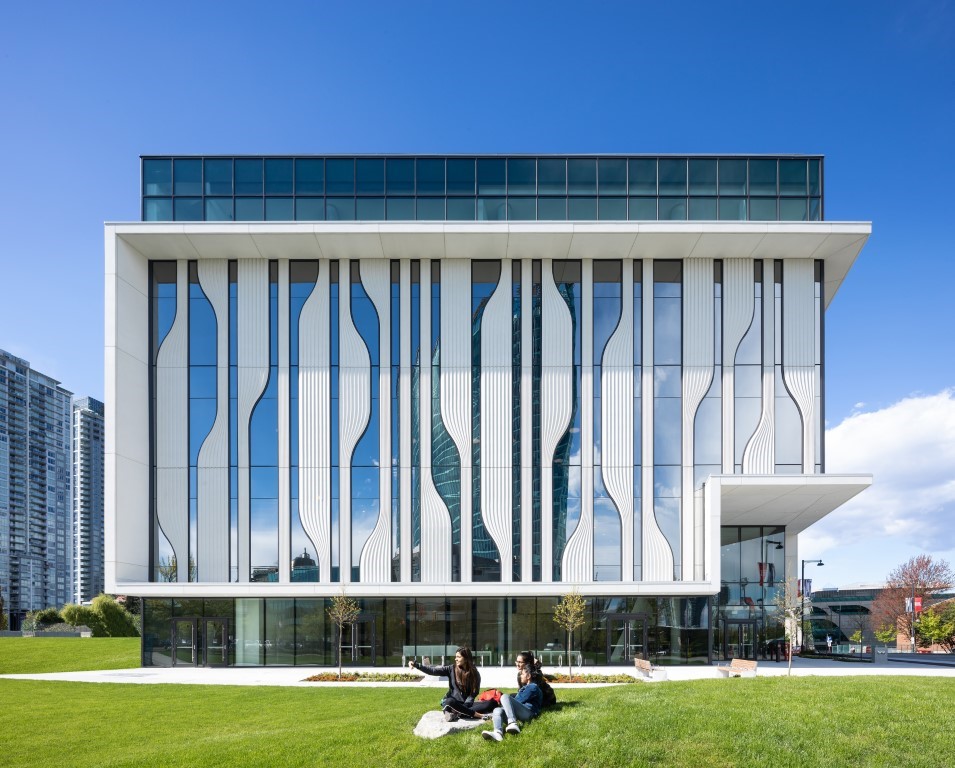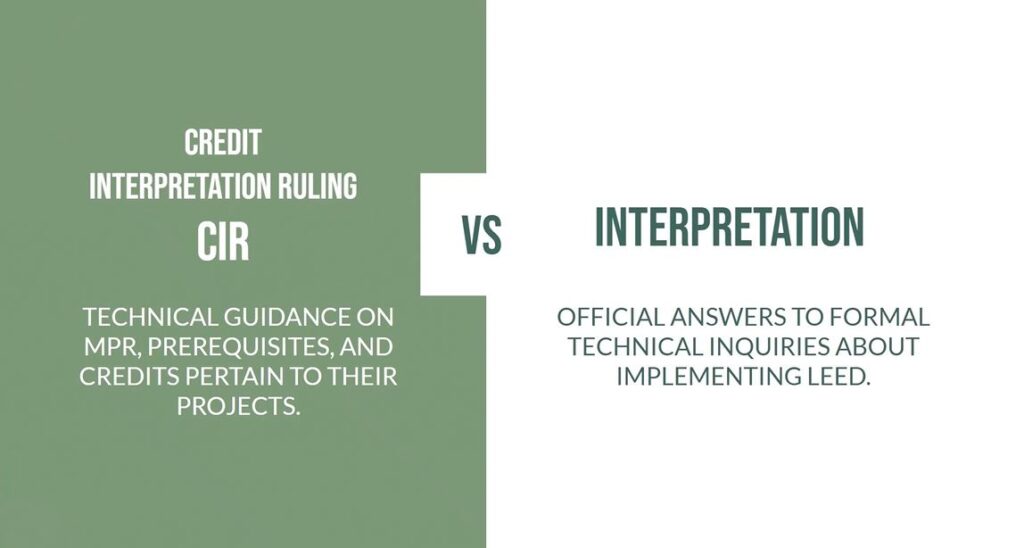LEED Interpretations serve as invaluable resources for professionals who have doubts regarding the technical aspects of a credit or prerequisite when certifying a LEED project. Whether you are new or already familiar with the LEED certification process, these interpretations serve as additional guides to attain a deeper understanding of LEED standards and framework.
So if you need support figuring out how to obtain a specific LEED credit, then this article may be your best free resource.
What is LEED?

Perhaps one of the most widely used green building rating systems worldwide, LEED stands for Leadership in Energy and Environmental Design. It is the framework by USGBC to follow if you are designing efficient, healthy and sustainable buildings with Environmental, Social, and Governance (ESG) benefits. It is awarded only to buildings which meet the criteria on various categories. A certification in LEED proves the design has been recognised for its achievement in sustainability – the design is energy and water-efficient and healthy for occupants.
There is a LEED certification for every project stage and typology. Whether you’re embarking on building design and construction, focusing on operations and maintenance, or aspiring to enhance the sustainability of entire cities, LEED provides a structured pathway to achieve your environmental goals.
Read more: LEED V4.1 Reference Guide – Your Ultimate Resource
What Are The Benefits Of LEED Certification?
LEED Certification For Buildings
LEED goes beyond standard building practices to prioritize the efficiency, comfort and well-being of occupants. When compared to traditional passive design approaches, LEED-certified designs offer a significant upgrade. LEED-certified designs ensure healthier spaces with ample daylighting, cleaner air quality and reduced pollution.



One of the key reasons why the industry is recognizing the importance of LEED certification is because of its ability to reduce energy consumption, waste and carbon emissions. Despite its many benefits to the environment, LEED ensures sustainable design, construction and operation that goes hand-in-hand with well-being of users. As such, LEED-certified buildings have also reported increased occupant productivity and property value.
LEED Certification For Architects & Engineers
If you are an architect with a LEED credential, you qualify as an innovator in sustainable building design. Becoming a LEED professional signifies a commitment to sustainable building design that prioritizes people, businesses, and the environment. It showcases your proficiency and experience with sustainable building design and construction and related standards.
LEED credentials, particularly the LEED Green Associate certification, provide architects with a competitive edge in the ever-growing sustainable building industry. Not only does a LEED credential strengthen an architect’s knowledge and skills, but it can also open new doors to exciting career opportunities.
LEED Interpretations
What Are LEED Interpretations?
The process of analyzing a project in light of the credit criteria used in a LEED rating system is referred to as LEED interpretation. In order to acquire this information, one must not only be knowledgeable with the requirements that must be met in order to earn each specific credit, but one must also be able to discover potential credits within a grading system that may be applicable to a variety of projects. Projects may be able to locate credits that are possible with the assistance of LEED interpretation, as well as design strategies to attain and even surpass goal metrics in areas like as energy efficiency, resource conservation, and sustainability.
To make the process easier, the U.S. Green Building Council (USGBC) publishes LEED interpretations. These interpretations can cover every aspect of the LEED rating system and framework. It is possible to issue a LEED interpretation in order to seek clarification. LEED interpretations may also be submitted via the use of LEED Online.
Why Do We Have LEED Interpretations?
Essentially, LEED interpretations are official answers which the USGBC issues to clarify formal technical inquiries related to LEED implementation. They explain the options and the overall framework further so that the project teams can easily meet the LEED requirements. They play a vital role in clarifying various aspects of LEED, such as its requirements, scoring system, or the interpretation of specific terms.
That being said, it’s crucial for project teams to thoroughly review and take into consideration all relevant LEED Interpretations into their planning, design and execution processes before the registration deadline. Failing to adhere to a LEED interpretation can potentially result in the denial of a LEED certification for their project.

Where Can You Find LEED Interpretations?
According to the USGBC website, the LEED Interpretations are reviewed and published every quarter in the LEED Addenda online database. The Addenda is the published list of references to the LEED rating systems and guides and can include corrections, clarifications, interpretations and alternative compliance paths.
Any changes in the LEED rating systems can also bring out new Interpretations to reflect the new changes. If you have questions about a specific LEED credit or prerequisite, you can submit a LEED interpretation request to USGBC. The USGBC will review your request and issue an interpretation if it is determined to be necessary.

LEED interpretation vs CIR
What Is The Credit Interpretation Request In LEED?
Depending on the project, sometimes the reference guides may not have all the necessary information to proceed with LEED implementation. If you are facing some trouble fulfilling a credit or a rating prerequisite, requesting a credit interpretation can provide clear definition and instructions. This process takes place on LEED Online, where projects are also registered at.
What Are Credit Interpretation Rulings (CIRs)?
A common confusion many industry professionals have when it comes to LEED interpretations is how they differ from CIRs.
Credit Interpretation Ruling, known as CIR, is a process to obtain technical guidance to fulfill LEED requirements pertaining to a project. It is issued to address the specific project for which the CIR was submitted.
Similar to the LEED Interpretations, it provides further clarity on LEED application during the process or before registering a project.

How Are CIRs Different From LEED Interpretations?
The main distinction between LEED interpretations and CIRs is that interpretations may create a precedent. However, CIRs cannot set any precedents as they are issued specific to a project. This implies that every LEED project will be allowed to employ the interpretation in question, and they will also conform to the LEED interpretation in question. In simpler words, the explanation that was provided in the LEED interpretation will be included throughout the whole of the LEED grading system.
The review of LEED Interpretations is handled by a LEED committee of USGBC member-selected volunteers. The committee would also decide whether to publish them via the database. The CIR, on the other hand, is handled by a review team or an accessor who will share if a particular credit is consistent with the rating system.
LEED Interpretation Vs CIR: Review Period
The review of a LEED interpretation will take more time than the evaluation of a CIR since it will be subject to USGBC’s consensus-based assessment before it is made available to the public on the USGBC website for online publication and access (approximately three to six months longer).
CIRs can also be requested via the use of LEED Online, much like LEED Interpretations. However, CIRs are not available online (like how the LEED interpretations are available on LEED Addenda database), and they cannot be used in conjunction with any other kinds of projects.
LEED Interpretation Vs CIR: Price
The cost of providing a LEED interpretation is $180 more than the cost of issuing a CIR for both USGBC members and nonmembers. This difference is due to the fact that LEED interpretations are more complex.
The US Green Building Council (USGBC) is in charge of administering LEED interpretations, and addenda may also include these interpretations. You may learn more about LEED and how to earn the certification in our free training here.

The Importance LEED Interpretations
These interpretations provide guidance and clarity on technical aspects related to specific credits or prerequisites, offering assistance when uncertainty arises. If the design is attempting to achieve a LEED credit under the ‘Applicable credits’, then the committee will review and determine the applicability.
Following the LEED interpretations can warrant that your project aligns with sustainable building practices and goals as stated in the LEED framework.
Understand the LEED framework and rating systems better with Archiroots and start your journey to become a LEED Green Associate!





